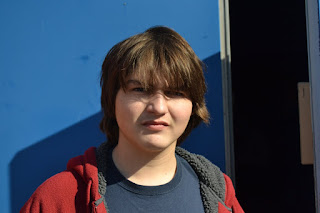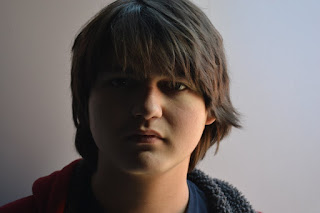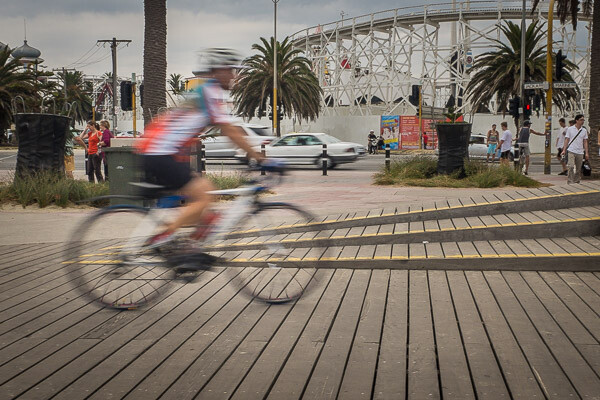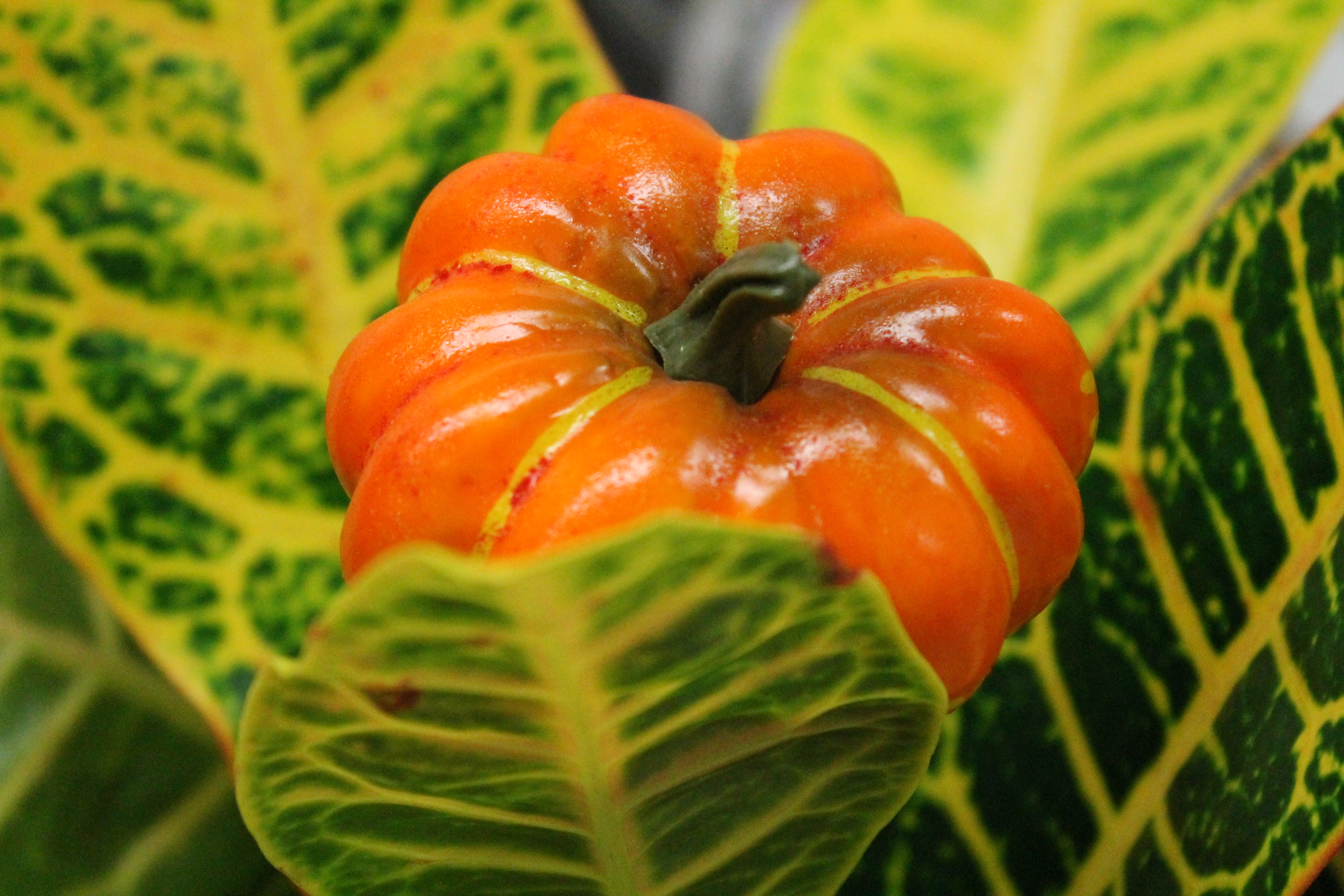Our most recent unit for CyberARTS is about typography based animation. The video that I chosen to write about was "Alphagames", which was made by freelance editor and animator Evan Seitz.
The first example of principals of animation (that I noticed) was 6 seconds into the video, when the letter B was shown in the centre. This was an example of staging, as the B was in focus, while the sides of the screen were empty space.
The second example is at 24 seconds in, which shows an example of slow in and slow out animation. This is shown by the sphere slowly rotating and moving toward the camera, then slowly moving back after getting close.
The third example is 34 seconds in, which shows an example of overlapping action animation. The way the overlapping action is shown is by having the cube bounce into the frame after a moment, then having the portal behind where the cube lands open up to show the cube. (And it continues like that.)
One more example is 9 seconds in, with the letter C, which shows Arcing animation. The arc is shown by the C moving around before stoping In position, with the C arcing around the other C before stopping in place.
The pacing of the video is somewhat fast paced, but not too fast, so the viewer can still understand the visuals. There isn't any speaking in the video, but the sounds/music in the video consists of sounds or music from the game that is currently on screen. Overall, a pretty neat kinetic typography video.
Some random art blog
Wednesday, 14 June 2017
Tuesday, 11 April 2017
Still life Drawing
For the last few weeks, we were assigned our first still life drawing. Our drawings consisted of flowers, animal skulls, a stuffed bunny, and a small statue figure. My drawing included the statue figure, a small bunch of flowers, and one animal skull on top of a table surface.
We started this assignment by having to draw a few rough drafts of all the different things on the table, and each person had to draw what they could see from where they were sitting. This was so drawings of the same things could look different with different angles and perspectives. We had to start with drawing all of the contour lines, and then shading in everything lightly before adding the darker shades to any darker spots. After we had finished 3-4 rough drafts, we had to choose 1 of the drawings to add value and shading to. This was to decide on the image to use for the full sized still life. For the still life drawing, we mostly repeated the same process for the 1 rough draft that was chosen. The only differences were the sizes and more detail in the shading.
For each still life drawing, we had to have a composition, such as diagonal or L-composition. The Composition I used for my still life is L-composition. The composition in this picture is created by the placements of the objects (Focal point). The statue was drawn in first to get an idea of how much space the flowers and skull would have to make an L-composition. I drew the tabletop that the objects were on to leave open space at the bottom to make to bottom part of the L-composition. With the focal point taking up the middle, left and most of the top of this still life, the remainder of the drawing creates the L-shape/L-composition with the negative space. I tried to make sure that the empty space is this drawing would seem purposeful, but wouldn't take away from the drawing.
For each still life drawing, we had to have a composition, such as diagonal or L-composition. The Composition I used for my still life is L-composition. The composition in this picture is created by the placements of the objects (Focal point). The statue was drawn in first to get an idea of how much space the flowers and skull would have to make an L-composition. I drew the tabletop that the objects were on to leave open space at the bottom to make to bottom part of the L-composition. With the focal point taking up the middle, left and most of the top of this still life, the remainder of the drawing creates the L-shape/L-composition with the negative space. I tried to make sure that the empty space is this drawing would seem purposeful, but wouldn't take away from the drawing.
Monday, 27 March 2017
Digital Portrait assignment (Year 2 CyberARTS)
For this assignment, we were required to choose an art style (from the last 100 years), and apply it to a self portrait. The style I chose is Pop art.
This is the image of my digital self portrait:
For my self portrait, I wanted to choose pop art since is a style that i really appreciate the look of. I wanted to go for more of a multi-coloured pop art style, as apposed to the simple 1-2 colours total pop art style.
I started with the background of the image, which from the start, I knew i wanted to include the question mark to fit the pose in the photo. I wasn't sure what i wanted for the skin tone, but I decided to make it slightly darker then the actual skin tone, and more pinkish. I used to cutout filter to get the rest of the colours for this image. (other than the question mark and background, which were made with the paint tool)
Overall, I wasn't as satisfied as I could've been with how this project turned out, but I do like how it turned out in the end.
This is the image of my digital self portrait:
For my self portrait, I wanted to choose pop art since is a style that i really appreciate the look of. I wanted to go for more of a multi-coloured pop art style, as apposed to the simple 1-2 colours total pop art style.
I started with the background of the image, which from the start, I knew i wanted to include the question mark to fit the pose in the photo. I wasn't sure what i wanted for the skin tone, but I decided to make it slightly darker then the actual skin tone, and more pinkish. I used to cutout filter to get the rest of the colours for this image. (other than the question mark and background, which were made with the paint tool)
Overall, I wasn't as satisfied as I could've been with how this project turned out, but I do like how it turned out in the end.
Tuesday, 28 February 2017
Rembrandt Lighting:

This photo is an example of rembrandt lighting because of the small triangle of light under the subject's eye.
Loop lighting:

This photo is an example of loop lighting.
Butterfly/Glamour lighting:

This is an example of butterfly lighting because of the butterfly-shaped/ odd shaped shadow underneath the subject's nose.
Split lighting:

This photo is an example of split lighting due to half of the subject's face being dark, while the other half is facing the light/lit up.

This photo is an example of rembrandt lighting because of the small triangle of light under the subject's eye.
Loop lighting:

This photo is an example of loop lighting.
Butterfly/Glamour lighting:

This is an example of butterfly lighting because of the butterfly-shaped/ odd shaped shadow underneath the subject's nose.
Split lighting:

This photo is an example of split lighting due to half of the subject's face being dark, while the other half is facing the light/lit up.
Friday, 24 February 2017
Tuesday, 14 February 2017
How shutter speeds, apertures and ISOs work.
Our assignment for CyberARTS today was to find examples of images with different ISOs, Apertures and Shutter speeds.
Examples for aperture:
F4 shot Low aperture shot


Both of these shots are examples of low aperture shots because the backgrounds behind them are blurred, while the subjects are focused on.
High aperture shot High aperture shot


Both of these shots are examples of high aperture because the both have foregrounds and backgrounds (and everything in the shot) in focus, as apposed to selective focus.
Examples of shutter speeds:
Low shutter speed Low shutter speed


Both of these photos are examples of low shutter speeds because they both have movement and/or blur (caused by movement).
High shutter speed High shutter speed


Both of these photos are good examples of higher shutter speeds because they both show splashes of water, but there is no movement in the photo.
Examples of ISO:
Low ISO Low ISO


Both of these shots are low Iso because neither of them have much sensitivity to light, and neither of the shots are very bright.
High ISO High ISO


Both of these shots are examples of high ISOs because they are both very sensitive to the light in the photos, and are also somewhat grainy.
Our assignment for CyberARTS today was to find examples of images with different ISOs, Apertures and Shutter speeds.
Examples for aperture:
F4 shot Low aperture shot

Both of these shots are examples of low aperture shots because the backgrounds behind them are blurred, while the subjects are focused on.
High aperture shot High aperture shot

Both of these shots are examples of high aperture because the both have foregrounds and backgrounds (and everything in the shot) in focus, as apposed to selective focus.
Examples of shutter speeds:
Low shutter speed Low shutter speed

Both of these photos are examples of low shutter speeds because they both have movement and/or blur (caused by movement).
High shutter speed High shutter speed

Both of these photos are good examples of higher shutter speeds because they both show splashes of water, but there is no movement in the photo.
Examples of ISO:
Low ISO Low ISO

Both of these shots are low Iso because neither of them have much sensitivity to light, and neither of the shots are very bright.
High ISO High ISO


Both of these shots are examples of high ISOs because they are both very sensitive to the light in the photos, and are also somewhat grainy.
Saturday, 11 February 2017
For our second assignment for year 2 CyberARTS, we were told to find 20-25 portraits on Pinterest, and choose our favourite out of the ones that we saved, as well as explaining why it was our favourite.
The image I chose for my favourite is This one : and it is called Hidden Beauty II, made by Rudra Mandal, and found on Pinterest.
Lighting: The lighting from this image comes from the subject's left side, or the right side of the picture. This is shown by the side of the subject's face that is less show is the more lit-up side. The image shows very direct lighting on the lit-up side of the face, while the other half is very deep or "harsh" lighting, which is also displaying broad lighting because the "broad" side of the face is very dark, while the less shown side is very bright/ lit up.
Expression: The viewer isn't able to really identify the subject's expression, but from I get from the image is that the subject is trying to hide their identity, as trying to hide their face from the camera.
Background: The background doesn't display any props, and is just blank. The only thing noticeable about the background is that it blends with the lighting of the shot. Most of the background is black, but the part of the subject that is lit-up is surrounded by the only lit-up part of the background.
Pose and posture: The subject appears to be formal in this picture, as there is nothing silly or out of place in the image. The image is simply a formal image tat is a close up of the subject's face (or at least what part of their face isn't covered)
Eyes and direction of gaze: The subject's eyes are not looking towards the viewer/camera, but are looking in front of how they are positioned for the shot. Their eyes are shiny due to the placement of the lighting in the shot.
Colour and Contrast: Unless black and white count as colours, there is no colour in this image, but the relationship between shadows and contrast are the main focus of this image.
What I like about the image: The reason why I like this image is because it is a serious looking image, and the lighting and shadows present in the image are very well done. I like how this image looks overall, and i think the artist/photographer did really well.
Subscribe to:
Comments (Atom)


